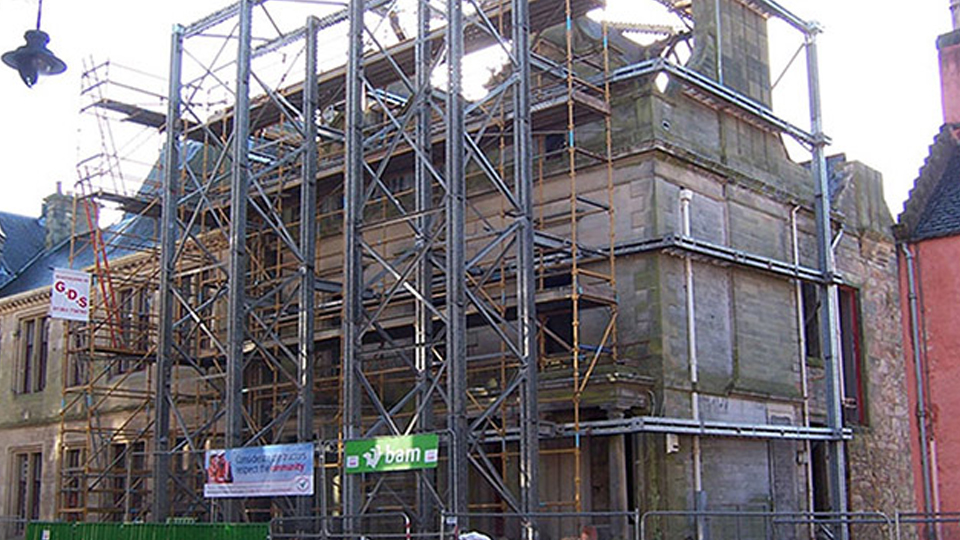Alumnus Lawrence Smith graduated in 1975 with a degree in Civil and Building Engineering and went on to become a Senior Project Engineer at Mabey Hire Ltd.
After spending three years designing temporary works for building refurbishment using proprietary soldier props to restrain facades and needle masonry walls, in 1991 he was approached by Mabey to develop and use a superior 50-tonne capacity propping system. Mabey already had an established modular temporary bridging and military trestling system, based on the World War II ‘Bailey Bridging’, but saw the opportunity to branch out into building refurbishment with another product.
Having noted the lack of versatility, stiffness, and the high cost of the available formwork soldier equipment, Lawrence’s team had a clean sheet for developing a superior system from scratch.
Two years were spent working on design and testing of the prototype mass-50 system, which was based on back-to-back 5mm thick cold-formed steel channels that were fabricated into 250mm module galvanised props.
A small range of fittings such as tubular and angle bracings to form towers and trusses were needed, along with adjustable ends. The main difference from formwork soldiers was providing prop flanges with bolt holes, allowing M20 direct bolting into 3D structures, without using heavy and expensive 6-way connectors or diagonal push-pull props. Additionally, the flange holes allow bolting in a way that avoids single-use structural steel sections, traditionally used for portals spanning pavements. Props range from 250mm up to 2000mm long, allowing longer members to be safely hand-built from light, shorter units, vital when working within existing buildings or where mechanical handling is inappropriate.
Several hundred tonnes of mass-50 are now in use by Mabey Hire for a variety of temporary structures. Various rival companies have since developed similar systems, but none have achieved 50 tonne axial capacity whilst maintaining the lightness necessary for safe manual handling. Following the success of mass-50, mass-25 was produced as a scaled-down 180mm module version, widely used for lighter applications.
For more information, see CIRIA C579 Retention of Masonry Facades, for which Lawrence was a major contributor.
This product development was instrumental in Lawrence's election to Fellow of The Institute of Structural Engineers (IStructE) in 2016. This month he received a letter from the President congratulating him on serving 40 years as a Chartered Engineer.
Although, now retired from full-time working, he continues to work as a sole practitioner to maintain his technical skills. He also trains and mentors graduates preparing for the IStructE chartership review and examination.
Photographs: Dunfermline Museum and Art Gallery building - a 2015 medium sized project.
